Heinkel He-111 H-8
Paravane

ICM, 1/48 scale
S
u m m a r y : |
Description and Item No.: |
ICM Kit No. 48267 - Heinkel He-111 H-8 Paravane |
Contents and Media: |
Plastic, parts; decals for three marking options; instructions. |
Price: |
£65.80 EU Price (£54.83 Export Price) plus shipping available online from Hannants |
Scale: |
1/48 |
Review Type: |
First Look |
Advantages: |
Intertesting subject; high level of detail; nice recessed surface textures. |
Disadvantages: |
|
Conclusion: |
The ICM 1:48 Heinkel He-111 H-8 is shaping up to be a standout model kit because its unique look with that Paravane structure.
This structure will not be easy to install but an expert modeler (even an intermediate) will handle it with no big issues.
The detail out of the box is very good and it will make a very good replica. For the expert and keen modeler some AM will make some extra detail to make this beauty into a masterpiece.
Highly recommend this to intermediate/expert modelers. |
Reviewed by Francisco Guedes

The Heinkel He 111 was a German airliner and bomber designed by Siegfried and Walter Günter at Heinkel Flugzeugwerke in 1934. Through development, it was described as a "wolf in sheep's clothing".
Due to restrictions placed on Germany after the First World War prohibiting bombers, it was presented solely as a civil airliner, although from conception the design was intended to provide the nascent Luftwaffe with a heavy bomber.
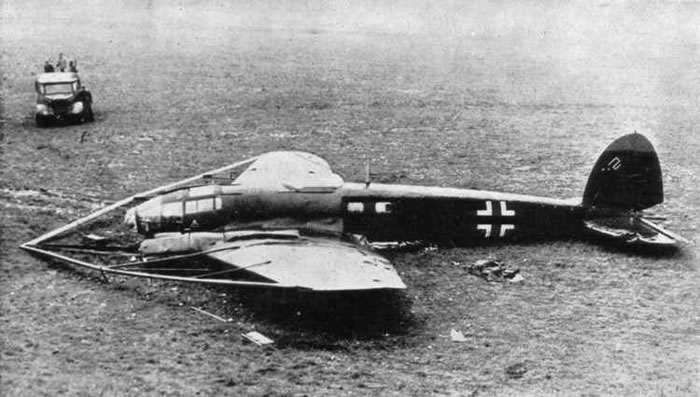
Perhaps the best-recognised German bomber of World War II due to the distinctive, extensively glazed "greenhouse" nose of the later versions, the Heinkel He 111 was the most numerous Luftwaffe bomber during the early stages of the war. It fared well until it met serious fighter opposition during the Battle of Britain, when its defensive armament was found to be inadequate.

As the war progressed, the He 111 was used in a wide variety of roles on every front in the European theatre. It was used as a strategic bomber during the Battle of Britain, a torpedo bomber in the Atlantic and Arctic, and a medium bomber and a transport aircraft on the Western, Eastern, Mediterranean, Middle Eastern, and North African Front theatres.
Some H-3 and H-4s were equipped with barrage balloon cable-cutting equipment in the shape of cutter installations forward of the engines and cockpit. They were designated H-8, but later named H8/R2.
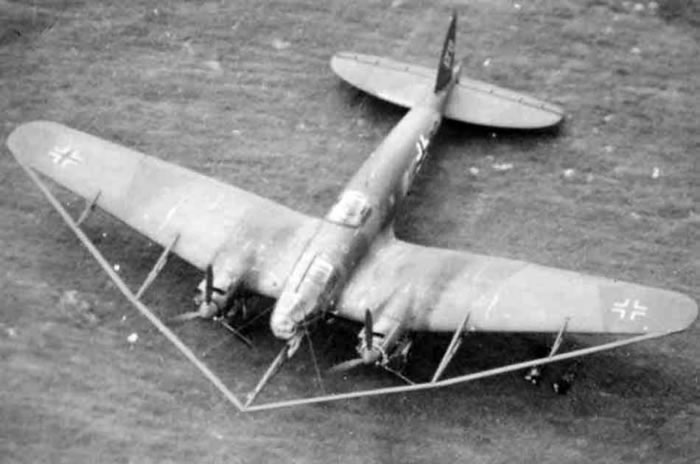
These aircraft were difficult to fly and production was stopped.*
*History from Wikipedia.
Now, let´s go to the model kit.
ICM's 1/48 scale He 111 has been around for quite some time now, but unbelieve I never have seen one in flesh. So I`m really excited to get my hands on the ICM release.
Checking the box, is the usual ICM flip top cardboard with a separate card lid showing the artwork.
Speaking of artwork, I really love these ICM artworks. No idea who is the author but kudos to his work.
All the plastic sprue are in two plastic bags with the clear parts in other plastic bag inside.
Checking the plastic parts, the injection markings are very sutble and mainly in places that will be hard to see when build. Its evident that ICM made the home work to make modeler live easier.
I`m very pleased to see all the internal structure present in the fuselage halves and the internal detai.
In the same way, I saw in the Martin Baltimore kit, ICM also make the join internal of the wing spars that extend beyond the engines. This help a lot the construction phase as it give wing support and correct alignment with the fuselage.
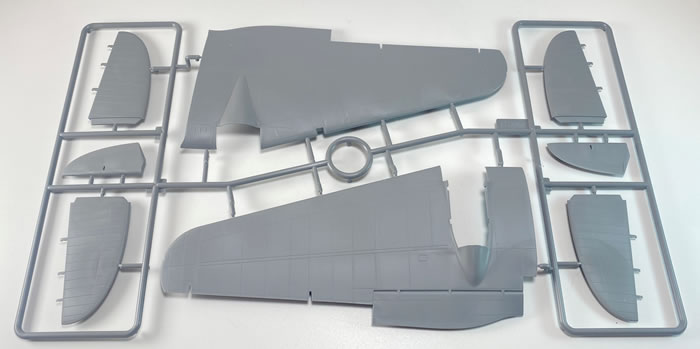
Before going to the plastic parts, I wanted to checked the clear parts as the He-111 as a huge front glass gondola.
The transparent parts are provided for the cockpit canopy, gun turrets, and windows. They are clear and free from distortion, allowing for excellent visibility of interior details.
The new sprue of the variation is the the K sprue that give us the ballon cutter (paravane) structure.
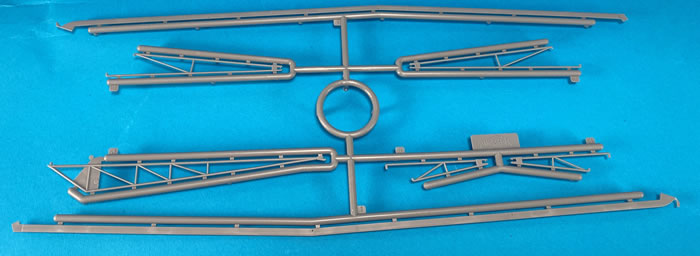
Checking the wings, they are just the same as other variations, as such no location holes from cutting structure (paravane structure). It`s complex as that would involve a mold modification that would be quite expensive. If the referent pinhole were on the inside, that could have been done since the beginning of the first release…
Instead, the ICM in steps 61/62 and 85/86, gives the measures in millimeters (worse, 3.5mm or 7.7mm) You will need a digital caliper) so you can drill the locations points. Are quite some complex measures directly on the mode surface and also a surgery in the wing edge cutting a little part of it to be the main external location of the paravane structure. This will not be an easy work at all. It will demand quite some measuring and pre-study to get it right but an intermediate/expert modeler should pull this off.
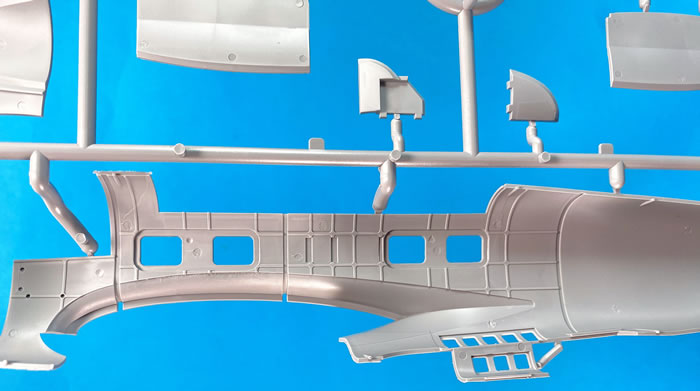
And the G sprue is not totally equal to the H-16 for example. The H-16 version has several bombs, bombs racks, machine guns and upper fuselage parte that this G sprue don’t have. It`s much smaller and only with tailskid, central belly and fuselage end cone (This implies a little surgery as the fuselage is complete with another end cone).
So, in step 43, it shows that you have to cut the end cone of the fuselage and replace it by the new one.

As I said before, it’s the first time I really check a ICM He-111. That said again, I was quite impressed to have two full detail engines straight from the box that you can used like that and left it open or hyperdetailed it with some plugs and wires and simple close all up. It`s really up to the modeler.
The flight control surfaces are all separated parts so it’s a cool touch from ICM that allows modeler to put the flying surface at their desired.
Markings
The decal sheet has a good color registration and supply 3 finishing options:
-
He-111 H-8 Paravane, Unknown Unit 1941
-
He-111 H-8 Paravane, IV./KG27 “BOELCKE”, France 1941
-
He-111 H-8 Paravane, 9./KG55 “GREIF”, France Spring 1941
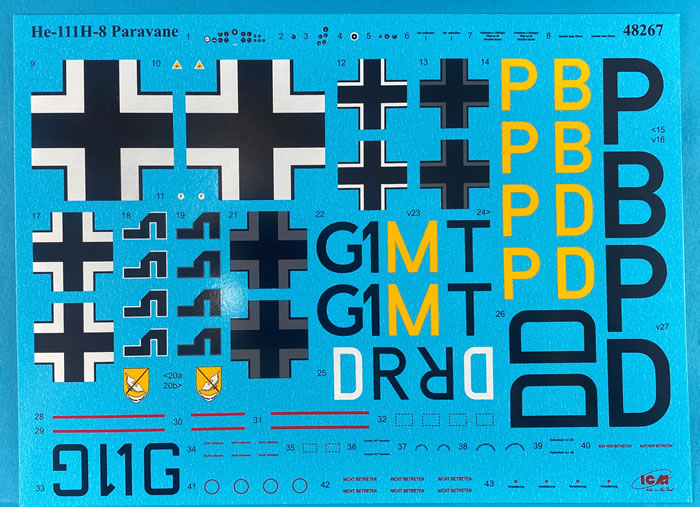
The instruction manual is detailed and easy to follow. It includes step-by-step assembly diagrams, color callouts, and decal placement guides.
The ICM 1:48 Heinkel He-111 H-8 is shaping up to be a standout model kit because its unique look with that Paravane structure. This structure will not be easy to install but an expert modeler (even an intermediate) will handle it with no big issues.
The detail out of the box is very good and it will make a very good replica. For the expert and keen modeler some AM will make some extra detail to make this beauty into a masterpiece.
Highly recommend this to intermediate/expert modeler
Thanks to ICM for the review sample.
Review Text and Images Copyright © 2023 by Francisco Guedes
Page Created 22 September, 2023
Last updated
22 September, 2023
Back to HyperScale Main Page
Back to Reviews Page

|
Home
| What's New |
Features |
Gallery |
Reviews |
Reference |
Forum |
Search